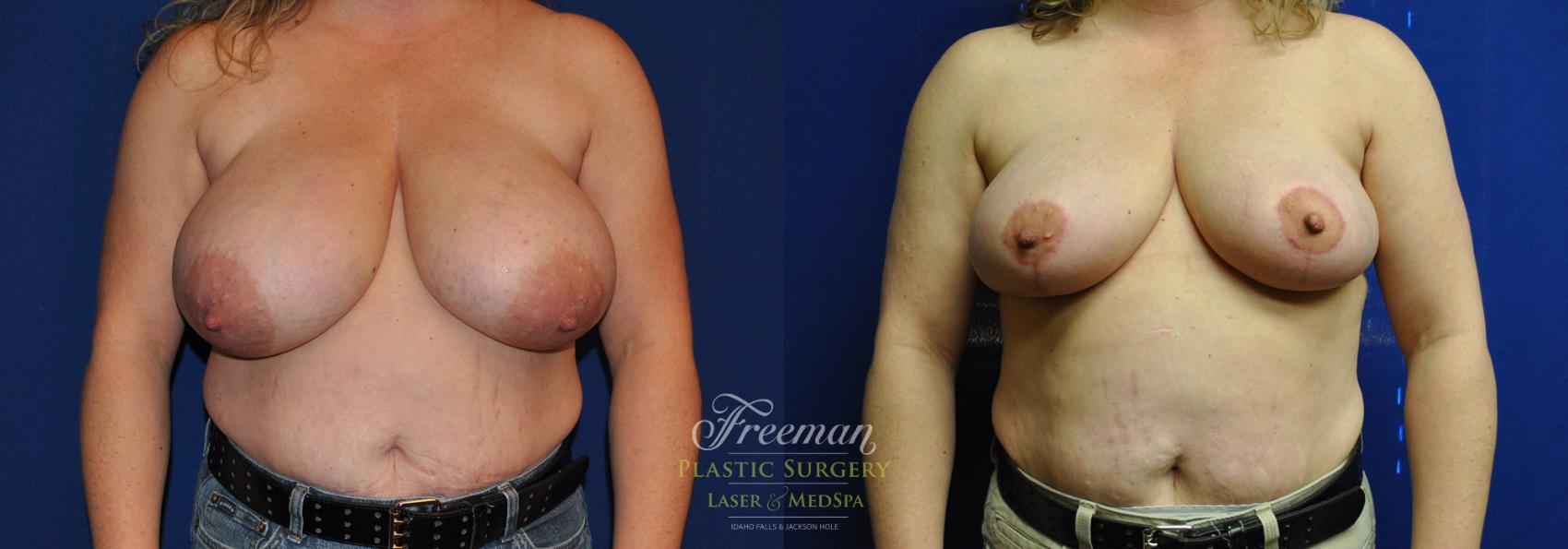If you’re considering breast reduction surgery but are hesitant because you’re worried about what the scars will look like, I’ve got a statistic for you: Nearly 12,000 breast lift patients give breast reduction a 97% “worth it” rating on RealSelf, the website where cosmetic surgery patients post reviews. That should give you some peace of mind.
It’s understandable to have some anxiety about what your breast reduction scars will look like. In this post, I’ll answer some common questions about the healing process, the evolution of the scars’ appearance during the first year, and how to minimize scarring after surgery.
What do breast reduction scars look like?
Breast reduction scars typically follow an “inverted T” or anchor pattern, creating a comprehensive reshaping of the breast. This surgical approach includes a circular incision around the areola, a vertical incision extending from the areola to the breast fold, and a horizontal incision along the breast crease.
For smaller reductions, a surgeon might use a more minimal vertical incision technique that eliminates the horizontal incision.
How fast do incisions heal?
The healing process occurs in distinct stages. Focusing on wound care during the first 2 weeks is essential to minimizing scars.
- First 6 weeks after surgery: You’ll notice prominent swelling and bruising, with incisions appearing fresh and dark (usually red or brown, depending on your natural skin tone).
- 2 to 6 months: The scars should begin maturing, with darkness gradually fading and the scars starting to flatten.
- 6 to 12 months: Significant improvements occur, and the scars continue to soften and blend with the surrounding skin.
Is there a way to minimize scarring?
Effective scar management requires closely following your surgeon’s postoperative instructions. Applying silicone gel sheets can hydrate the skin and help flatten raised scars. Gentle massage promotes blood flow and breaks down scar tissue, while consistent moisturization supports healing. Protecting scars from sun exposure is critical to prevent discoloration and further damage.
What about scar cream or other over-the-counter treatments?
Several drugstore treatments can support scar healing. Silicone sheets and gels remain the most recommended, with products like Mederma® and ScarAway® offering targeted scar reduction. Vitamin E and specialized moisturizing creams can also improve the appearance of your scars. Most treatments can be started around 2 to 4 weeks post-surgery, but confirm your scar care products with your surgical team.
What if scars are still prominent after a year?
If you remain self-conscious about the appearance of your scars even after trying home treatments, laser skin resurfacing, including the Halo® hybrid laser, effectively minimizes scars with little downtime. Dr. Freeman is a fellowship-trained laser specialist. You can read more about Halo laser treatments in an earlier blog post.
Even though scars may never completely disappear, they typically become significantly less noticeable with proper care and patience. Each person’s healing process is unique, but consistent, gentle treatment yields the best results. You can discuss breast reduction surgery with one of our plastic surgeons by requesting a consultation using the online form or by calling our Idaho Falls location at (208) 881-5351.







Leave a Reply